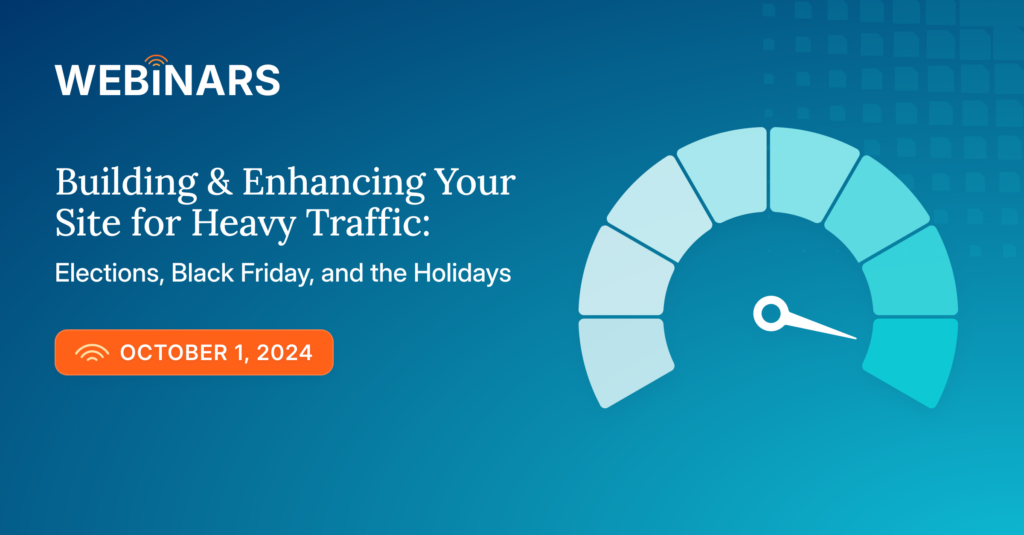
Webinar | Boost Your Website’s Performance During Peak Traffic Seasons
The busiest months of the year are fast approaching—to take advantage of the extra traffic, websites will need to keep up with the rush.
In this webinar, experts explore strategies to help you optimize your WordPress site for high traffic. Whether it be a news media site publishing election updates or an eCommerce store gearing up for Black Friday, these tools and strategies will help ensure your site remains fast, reliable, and ready for anything.
During the session, experts discuss:
- The importance of performance: Learn why website speed and reliability are crucial during high-traffic periods, and how poor performance can affect your bottom line.
- Building and scaling for heavy traffic: Discover best practices you can use to optimize sites for a surge without sacrificing speed or user experience.
- Industry insights: Hear real-world stories and strategies to keep your site performing smoothly under pressure.
Panelists include:
- Matt Devlin, President at MG Marketing
- Gabe Flores, Director of Digital Marketing at Dallas Mavericks
Watch now to gain powerful insights that can help ensure your website is ready for the busiest time of the year!
